The Barringtonia acutangula, commonly known as the lộc vừng tree, is a popular choice for homeowners in Vietnam due to its beauty and auspicious symbolism. This guide will reveal the secrets to successfully cultivating and caring for this tree, as well as exploring its profound significance.
1 What is the Lộc Vừng Tree?
The Lộc Vừng tree is a prized ornamental plant, scientifically known as Barringtonia acutangula, and is a member of the lộc vừng family. It thrives in the humid coastal regions of South Asia and Northern Australia, and has also found a favorable environment in Vietnam, growing abundantly from the North to the South.
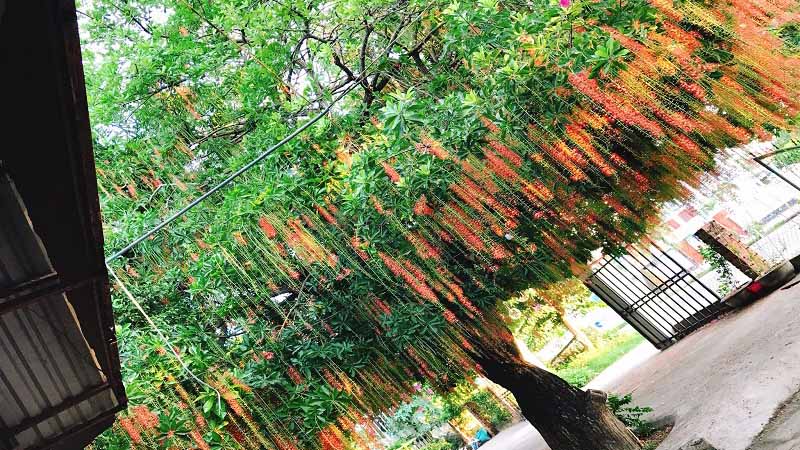 The Lộc Vừng is a sturdy, woody tree
The Lộc Vừng is a sturdy, woody tree
The Lộc Vừng is characterized by its sturdy, woody trunk. Its leaves are shaped like sickles, and its flowers come in two colors: white and red. These blooms form attractive clusters and long chains, filling the air with a delicate fragrance. The tree typically flowers from March to August, creating a stunning display of blooms and a subtle scent.
The Lộc Vừng tree is one of the “Three Gods” trees, which also include the Sung (Phúc) and Vạn Tuế (Thọ) trees. The presence of the word “Lộc,” meaning fortune, in its name signifies that it will bring good fortune to its owners. Additionally, the lush foliage and clustered flowers symbolize family harmony and unity.
2 Different Types of Lộc Vừng Trees and Their Characteristics
There are several varieties of Lộc Vừng trees, each with distinct features. In Vietnam, three common types are widely recognized: the red Lộc Vừng, the white Lộc Vừng, and the rau vừng tree.
Red Lộc Vừng
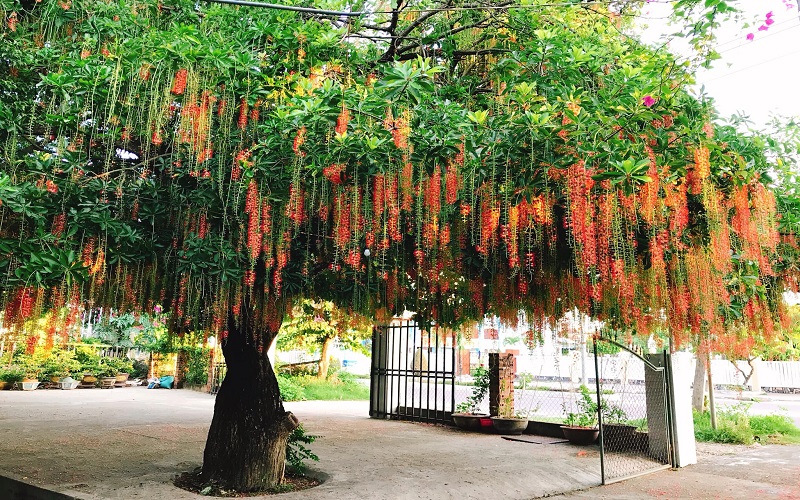 The captivating red Lộc Vừng with its vibrant blooms
The captivating red Lộc Vừng with its vibrant blooms
The red Lộc Vừng, with its captivating red flowers and subtle fragrance, is the most popular variety among homeowners. Originating from flooded areas in coastal regions of South Asia, Northern Australia, the Philippines, and Queensland, this tree has become a favorite in Vietnam due to its auspicious color and name.
White Lộc Vừng
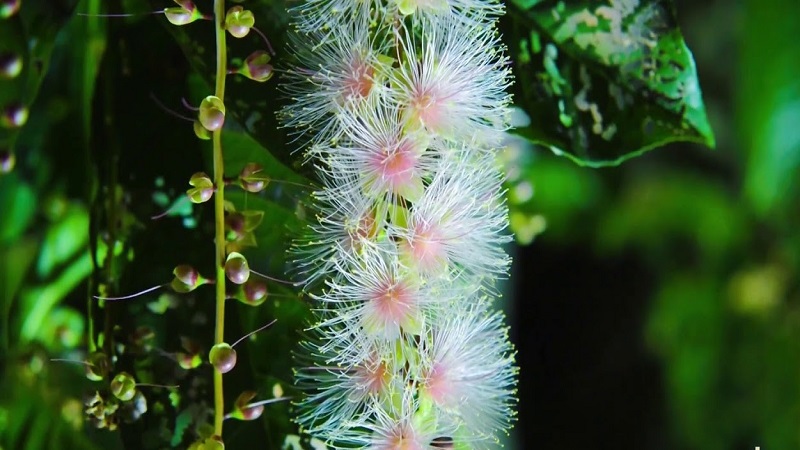 The white Lộc Vừng, a stunning addition to any landscape
The white Lộc Vừng, a stunning addition to any landscape
The white Lộc Vừng variety features eye-catching white blooms that grow in clusters. It is commonly chosen for landscaping and garden beautification purposes.
Rau Vừng
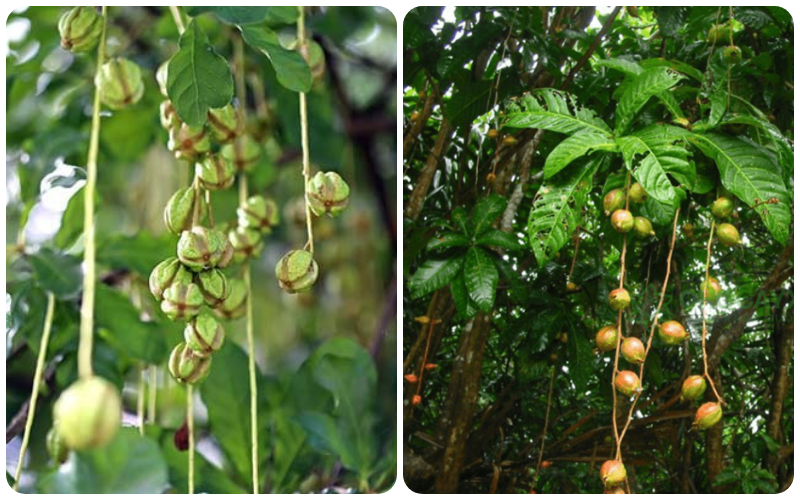 The rau vừng tree is commonly found in Southern Vietnam
The rau vừng tree is commonly found in Southern Vietnam
The rau vừng tree is prevalent in the southern regions of Vietnam, particularly in mangrove areas and along the coastline. It is valued for its dense foliage, which provides ample shade. Interestingly, this variety bears fruit directly on its branches, rather than through flowering.
3 Symbolism and Significance of the Lộc Vừng Tree
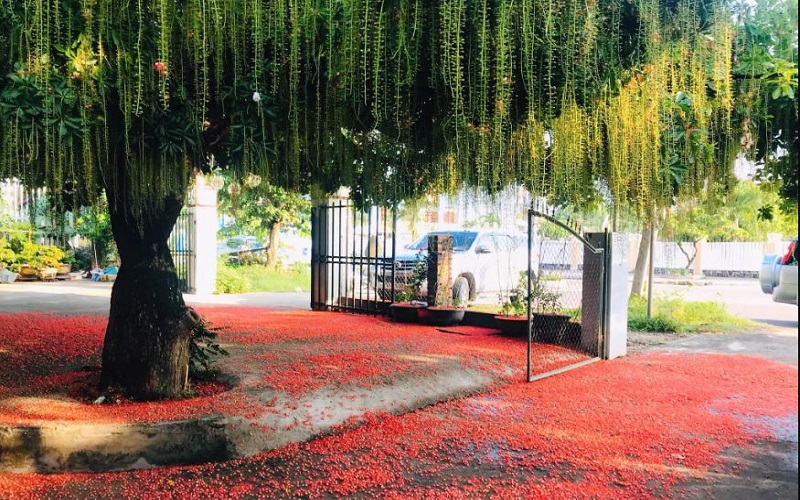 The Lộc Vừng tree represents prosperity, good fortune, and harmony
The Lộc Vừng tree represents prosperity, good fortune, and harmony
The Lộc Vừng tree holds profound symbolism, representing prosperity, good fortune, and harmony. The presence of the word “Lộc” in its name is believed to attract wealth and abundance. Additionally, the lush foliage and clustered flowers symbolize family harmony and unity.
According to traditional beliefs, the vibrant red flowers of the Lộc Vừng tree symbolize joyous occasions. The sturdy and robust trunk reflects the unwavering determination of the homeowner. The longevity of the tree is also associated with the longevity of the family members. Moreover, the tree evokes a sense of peace and safety, warding off misfortune.
4 Health Benefits of the Lộc Vừng Tree
Apart from its aesthetic and symbolic value, the Lộc Vừng tree is also prized for its medicinal properties. Various parts of the tree are used in traditional medicine, offering a range of health benefits. In Eastern medicine, the Lộc Vừng tree is believed to have a neutral nature, a sweet taste, and a fragrant seed, making it effective in treating various ailments, including weakness and premature graying of hair. Here are some specific uses of different parts of the tree:
The fruit of the Lộc Vừng tree is used to treat coughs, asthma, eczema, and toothaches.
The bitter-tasting roots are valuable in treating inflammation, skin infections, and measles, and are also used in the preparation of antipyretic drugs.
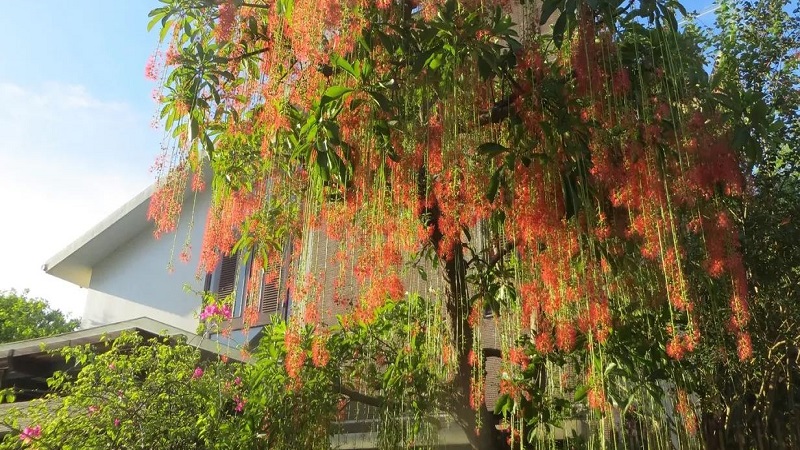 The Lộc Vừng tree is not just aesthetically pleasing but also a valuable medicine
The Lộc Vừng tree is not just aesthetically pleasing but also a valuable medicine
Western medicine has recognized the seeds of the Lộc Vừng tree for their medicinal properties, including the presence of saponins and other valuable nutrients. They are used in the preparation of drugs to treat cancer, reduce pain, and combat fungal infections. Additionally, they are effective in treating diarrhea, dysentery, and eye infections.
The leaves of the Lộc Vừng tree are used to treat hemorrhoids.
The bark of the tree is used to treat diarrhea and dysentery.
5 How to Grow and Care for the Lộc Vừng Tree
Planting the Lộc Vừng Tree
 Planting a Lộc Vừng tree seedling in a pot, covering it with soil, and watering it for healthy growth
Planting a Lộc Vừng tree seedling in a pot, covering it with soil, and watering it for healthy growth
Step 1: Select a Lộc Vừng tree seedling, which you can purchase or propagate from a cutting or layering a branch if you have an adult tree.
Step 2: If you’re planting in a garden, dig a hole deep enough to accommodate the tree’s roots. For pot planting, choose a deep pot to allow for root development.
Step 3: Place the seedling in the hole or pot, cover it with soil, and water it.
Note: Avoid planting the Lộc Vừng tree directly in the path leading to your house, as it is believed to block the flow of fortune into your home. Instead, plant it to the left or right of your house to attract wealth and ward off negative energy.
Caring for the Lộc Vừng Tree
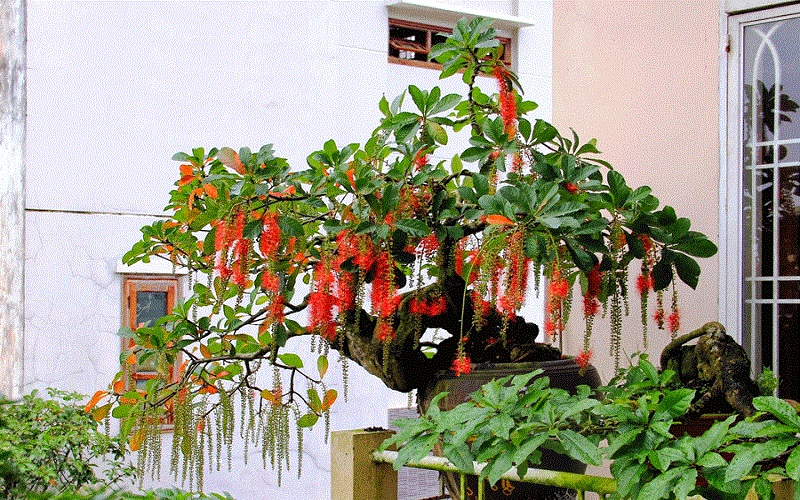 Choose well-drained, airy soil and maintain moisture for the Lộc Vừng tree’s optimal growth
Choose well-drained, airy soil and maintain moisture for the Lộc Vừng tree’s optimal growth
Soil: Opt for airy, well-drained soil with high levels of humus, such as sandy loam or well-rotted manure.
Watering: Maintain moisture in the soil, watering twice a day is usually sufficient for the tree’s growth and development.
Light: The Lộc Vừng tree thrives in bright, sunny conditions, so choose a spot with ample sunlight.
Fertilizer: If the soil is rich in nutrients, additional fertilization is not necessary. However, you may fertilize young trees or trees about to flower once a month with organic fertilizer.
6 Where to Buy the Lộc Vừng Tree and Price Range
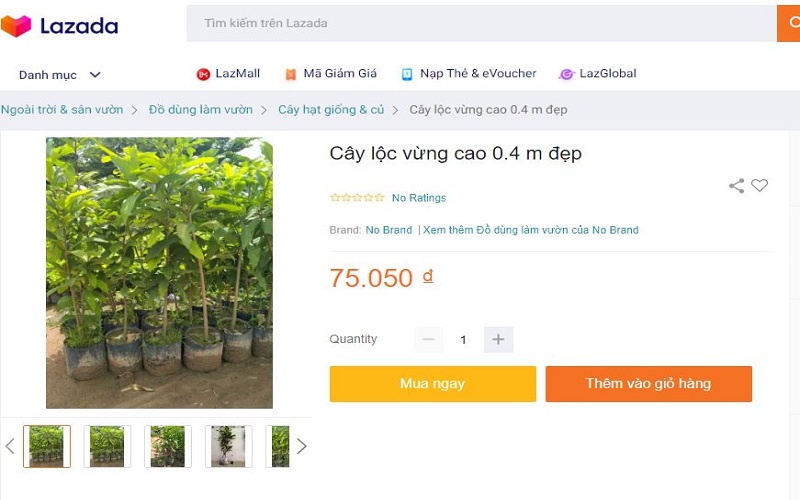 You can purchase Lộc Vừng trees from online platforms like Lazada
You can purchase Lộc Vừng trees from online platforms like Lazada
You can find Lộc Vừng trees at nurseries, garden centers, or online platforms like Tiki and Lazada. The price of a young tree typically ranges from 40,000 to 130,000 VND.
In conclusion, the Lộc Vừng tree is not just a beautiful ornamental plant but also holds deep cultural and medicinal significance. By understanding its symbolism, growth requirements, and health benefits, you can incorporate this tree into your home or garden, bringing good fortune and harmony to your living space.

































